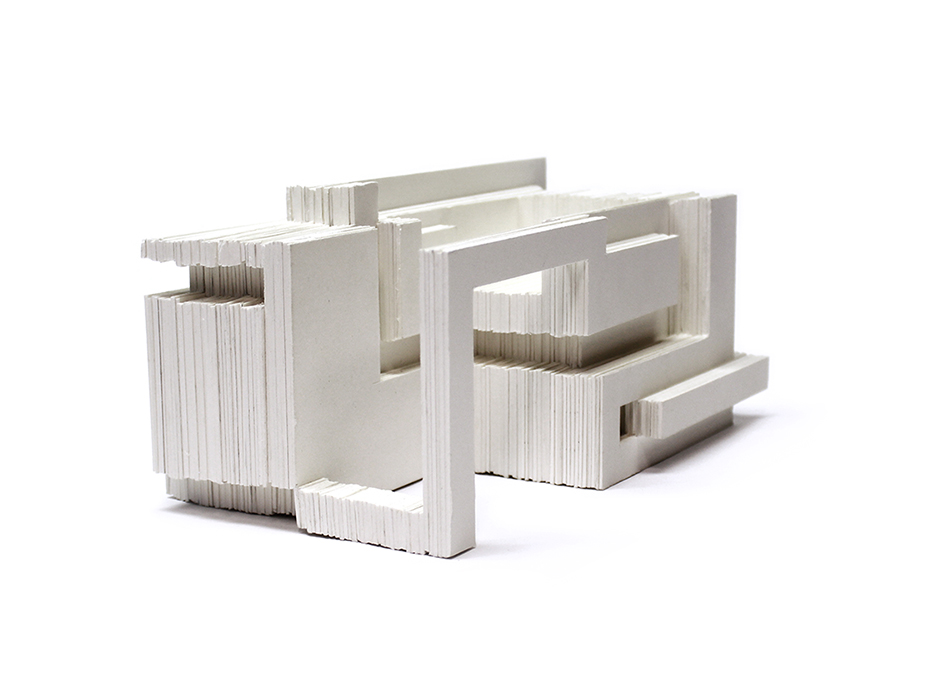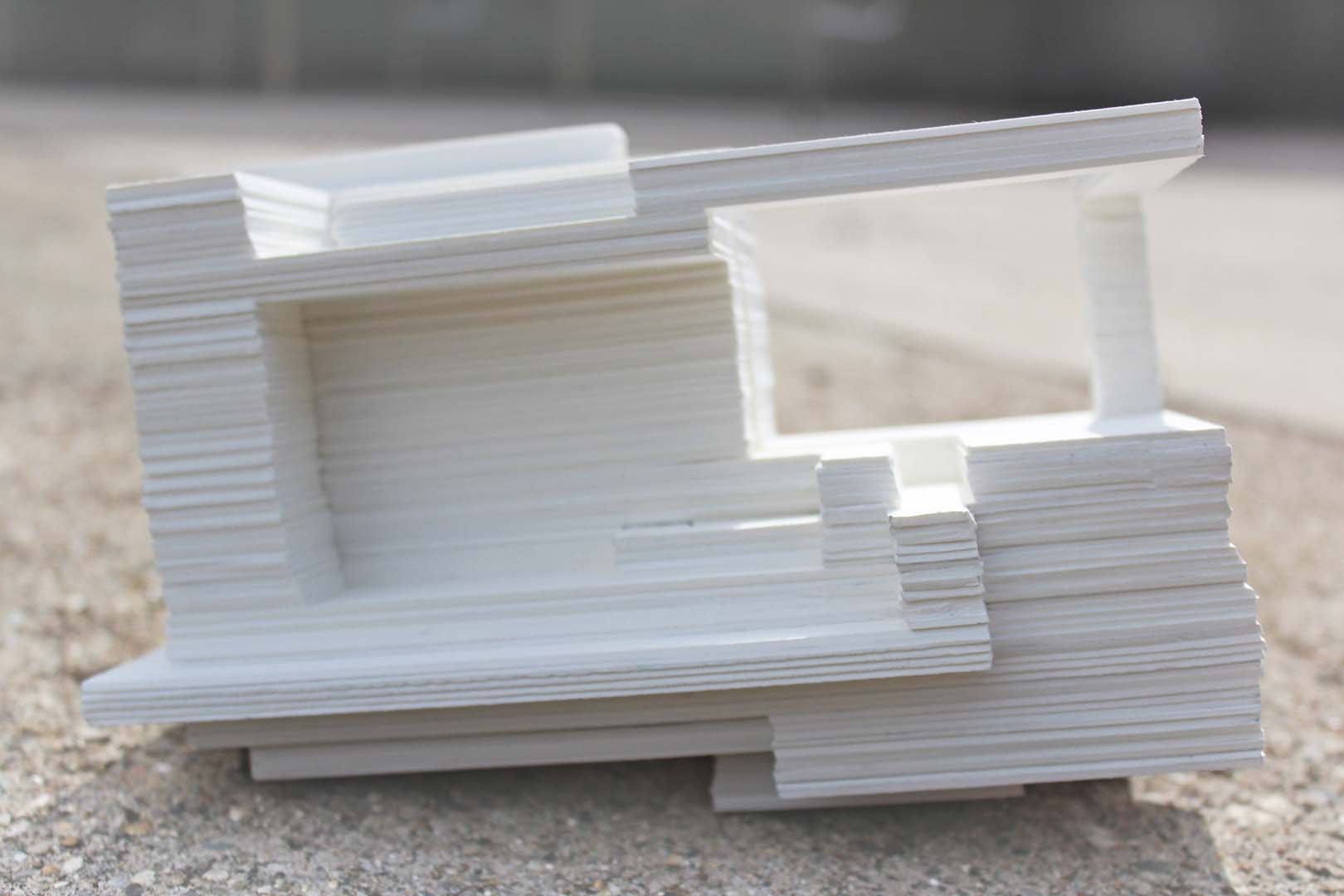Fall 2015 / University of Michigan
Nominated for the 2017 Architecture Student Show
Design Studio I with Melissa Harris
giorgio morandi & the loop
Four weeks of examining form as a generative tool. We begin with a Morandi painting, and end with a 96-layered, stacked museum board model.

It begins with a Morandi painting. A still life, a bore. Two vases and a black block. A cream pitcher, maybe. We get it. There is a flat horizon line. There are objects in the foreground, four of them.
But when we step closer, there are flukes.
The horizon line is misbehaving. It wraps around the left vase, abandoning its traditional post to read as skin, draped over the object.
Then the black block hits the left vase. And of course, we assume that there’s distance between the two objects. We expect that in plan, they’re two self-contained shapes.
And yet, there’s no concrete basis for our assumption. Only two arbitrary colors whose contrast we associate with depth.
Let’s wonder for a moment. Could these two objects, (block and vase), in fact be one connected unit, despite their visual differences? Could the “block” be a wrapper, unfurling off the vase? Could it be a hinge attached to the vase?
Morandi is playing tricks on us, giggling behind a banal still life.






Morandi’s horizon line finally translates into a loop we track throughought the form. It is mischievous, versatile, both searing into the model and outlining new territory, until it drills through the entire mass like a bullet.
While the loop is visually continuous, physically—it is not. Instead, it serves as both a void and a thin band. In the model, these two entities read as one uninterrupted unit. They are sly, exploiting the fact that the human eye can read space as visually true, without it being physically true.

© Karen Duan, 2020